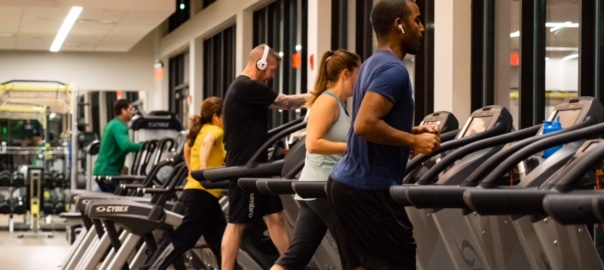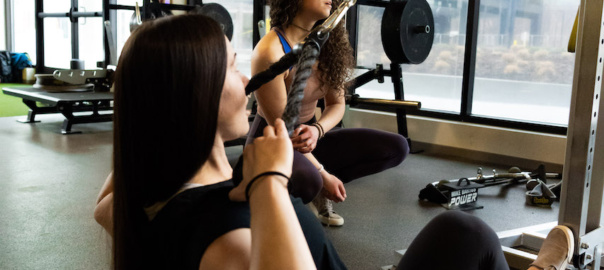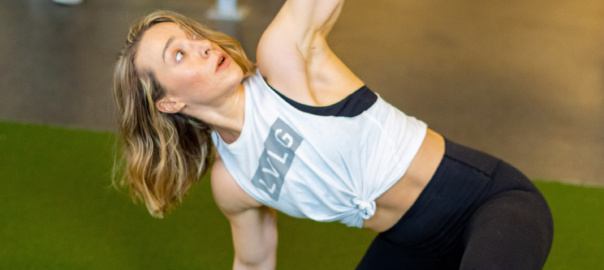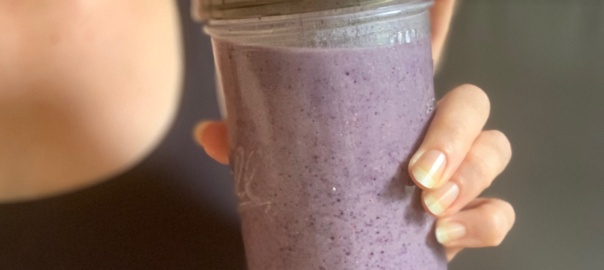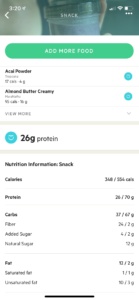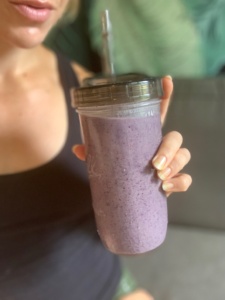Heat exposure is not a new discovery. Its benefits of cleansing, recovery, and purification have been recognized for thousands of years and used by many cultures. For the purposes of this article and for familiarity’s sake, we’re going to refer to a specific type of heat exposure: sauna use. The sauna is technically short exposure to high heat that results in hyperthermia. And hyperthermia is just an increase in your body’s core temperature, so don’t be alarmed! The optimal temperature of a sauna is between 175 to 194 degrees Fahrenheit. Exposure time can range from 5-20 minutes.
People use saunas for a variety of reasons, but a few of the most common are: increasing blood flow to sore muscles/joints via blood vessel dilation and the delivery of nutrients, stress reduction/relaxation, and for deep sweating to purify, cleanse, and detox the body.
I wanted to write this for two reasons.
- I am constantly engrossed in the many ways we can naturally recover better and potentially increase longevity.
- I wanted to share my findings in this blog to hopefully give you more tools to add to your routine to aid in both internal and external gym health.
FOUR noteworthy benefits of sauna use:
Cardiovascular
With sauna use comes many heart health benefits. When sitting in such high temperatures, our body requires the heart to work harder. Physiologically, heart rate increases like it would during a moderate-to-high intensity bout of physical exercise. This in part is due to the rising need for oxygen and blood flow to the skin to aid in the production of sweat. On average, most people lose about 1.1lbs of sweat in the sauna. We are told exercise is good for our heart…but why? Exercise improves arterial compliance. Exercise can aid in blood pressure regulation because of the stretch and relaxation that we progressively overload on the walls of our heart and vessels, as well as improving the efficiency of the left ventricle of the heart, the main driver. Like exercise, the sauna induces these responses. This does not mean you can nix the idea of exercise and just sit in the heat. It does mean that this a great addition to exercise, to further improve longevity, and to help us better handle stress.
Cardiovascular disease is the number one driver of death. If we can prevent this through lifestyle and behavior changes (ie. exercise, nutrition, sauna exposure, etc.) then we are one step ahead. In a pilot trial, 20 subjects with diagnosed peripheral artery disease (where the arteries that supply the head and extremities decrease and weaken), were given 50 sauna sessions for 10 weeks. After 10 weeks, the subjects showed improvements in walking, blood flow to the lower extremities, and a reduction in pain levels. [1] This study is one of many that show significant improvements in cardiovascular health from sauna use.
*Note: always consult with a doctor if you have any medical condition before introducing your body to high heat exposure.
Toxin reduction
Most of us sweat in some capacity. But, many of us do not DEEP sweat. Throughout our daily endeavors, we absorb many toxins in the environment. These toxins are chemicals and naturally-occurring metallic elements known as heavy metals: lead, cadmium, nickel, copper, mercury, and zinc. Studies have measured heavy metal levels in blood, sweat, and urine. Sweat is shown to have higher levels of these toxic elements than the others. Deeply sweating has been shown to get rid of these harmful metals. Sweating has been used for centuries to release chemicals and toxins that we pick up from day to day. So…with that being said, hop in a sauna or find ways to deeply sweat!
Cognitive health:
Heat exposure has the potential to be very beneficial for both mental health and cognition. Heat has the propensity to increase brain-derived neurotrophic factor (BDNF), a protein in the brain responsible for the production of new neurons. BDNF is found in parts of the brain such as the cortex, cerebellum, hippocampus, and basal forebrain. For cognitive function, we need both the generation of new neurons as well as optimal blood flow, two things that the sauna has been shown to improve.
Two studies exposed subjects to 176 degrees Fahrenheit of sauna heat, both showed a significant increase in norepinephrine levels (hormone/neurotransmitter) as well as an increase in prolactin (the pituitary hormone responsible for myelin growth- faster brain signaling). [2][3] What does this mean? Better focus.
Lastly, let’s touch on mental health. Have you ever noticed when leaving a sauna, you feel at ease and euphoric? Sauna use releases beta-endorphins, which are a part of our body’s opioid system. These are the same feel-good endorphins we receive from exercise.
Physical activity
As mentioned above, the sauna increases blood vessel dilation as well as the release of endorphins, both needed post-training. Why? Blood vessel dilation is going to improve circulation, delivery of nutrients needed for muscle repair, and a speedy recovery. Have you ever experienced the feeling of “hitting a wall” near the end of your workout? This is because your glycogen stores within your muscles are depleted. Therefore, it’s important to replenish those store. Some of the nutrients we receive via blood are glucose, fatty acids, oxygen, and growth hormones.
Sauna use has been shown to increase both growth hormone and heat shock proteins. Two mechanisms in the body for increasing hypertrophy and minimizing the muscular damage following a workout. Not only is this cool news for muscle growth, changing our body composition, and speeding up recovery, but also for preventing muscular atrophy – a result of aging, immobilization, and disease.
Another great benefit is heat acclimatization. Sauna use helps our body adapt to heat exposure making exercise more tolerable in high heat environments.
So, to recap how sauna use can benefit us in the gym: sauna use can improve heart function, which means better oxygen delivery to our working muscles. The heat exposure helps us improve our thermoregulation. We get an increase in both endogenous growth hormone and heat shock proteins. Plus, sauna use can increase red blood cell production. Another great addition to improve our work capacity.
I hope with some of these findings, we not only consider introducing more heat exposure but also, remember how important it is to keep asking how we can improve our body on an entire spectrum and not just gym recovery. If you are not a habitual sauna user, the best way to start is to go in for short 5-10 increments. Take short breaks and listen to your body. Gradually increase the length of heat exposure over time and remember to ALWAYS hydrate!
References
- Tei, Chuwa, Takuro Shinsato, Masaaki Miyata, Takashi Kihara, and Shuichi Hamasaki. Waon Therapy Improves Peripheral Arterial Disease Journal of the American College of Cardiology 50, no. 22 (November 2007): 2169-71. doi: 10.1016/j.jacc.2007.08.025.
- Hannuksela, Minna L, and Samer Ellahham. “Benefits and risks of sauna bathing” The American Journal of Medicine 110, no. 2 (February 2001): 118-26. doi: 10.1016/s0002-9343(00)00671-9.
- Laatikainen, T.,L. Salminen, A. Kohvakka, and J. Pettersson. “Response of plasma endorphins, prolactin and catecholamines in women to intense heat in a sauna” European Journal of Applied Physiology and Occupational Physiology 57, no. 1 (1988): 98-102. doi: 10.1007/bf00691246.

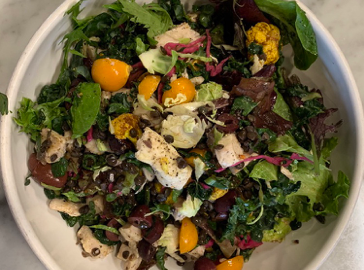

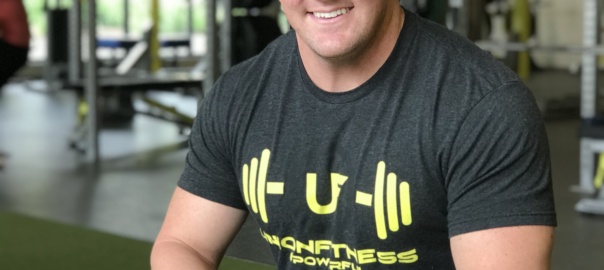
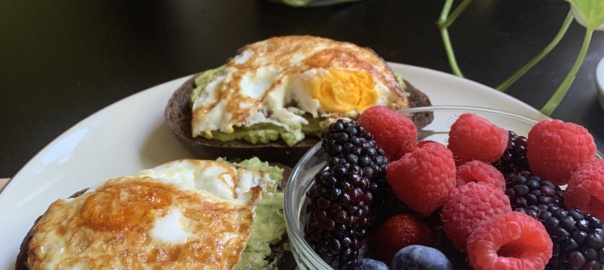
 Now that the weather is amazing, head out on the balcony with BB. I’m working through a meditation that lasts anywhere from 10-45 minutes as you build it (if you’re interested, I recently read Dr. Joe Dispenza’s Breaking the Habit of Being Yourself and it has been truly life-changing). Post-meditation, I start on my skincare (Vit C serum), my coffee, and a little reading (I’m re-reading and note-taking Ryan Holliday’s Ego is the Enemy currently). BB cuddles up with me. There’s always a candle going and a breeze and some plants. It’s heavenly.
Now that the weather is amazing, head out on the balcony with BB. I’m working through a meditation that lasts anywhere from 10-45 minutes as you build it (if you’re interested, I recently read Dr. Joe Dispenza’s Breaking the Habit of Being Yourself and it has been truly life-changing). Post-meditation, I start on my skincare (Vit C serum), my coffee, and a little reading (I’m re-reading and note-taking Ryan Holliday’s Ego is the Enemy currently). BB cuddles up with me. There’s always a candle going and a breeze and some plants. It’s heavenly.
